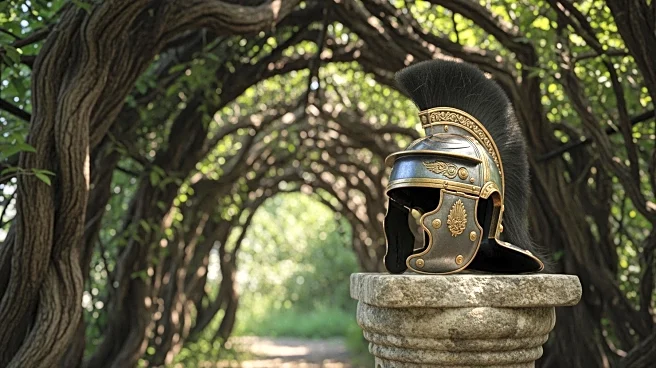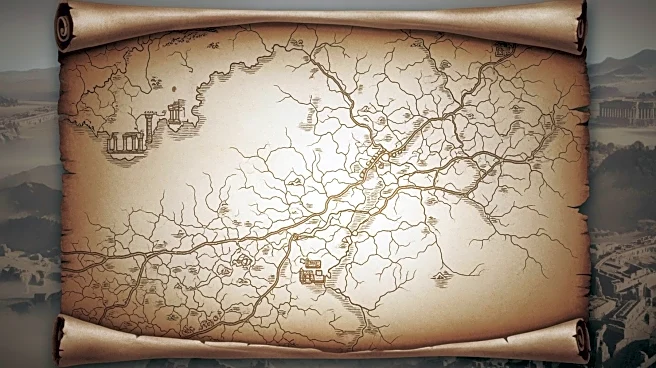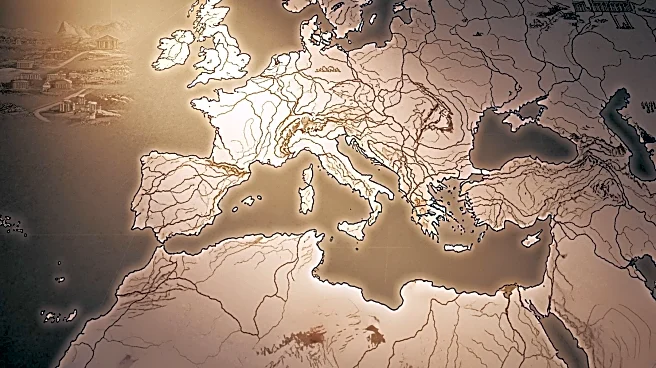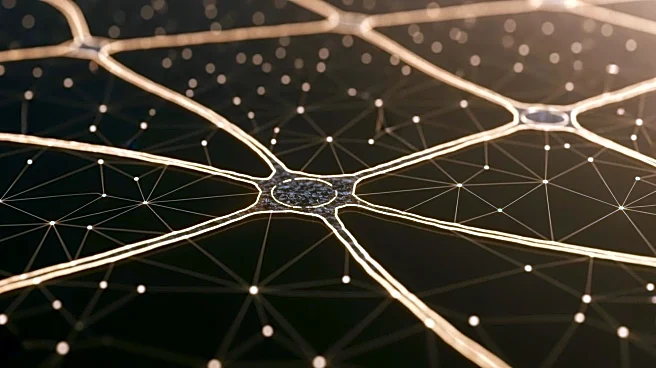What's Happening?
A recent study has unveiled that the network of ancient Roman roads was significantly more extensive than previously believed. Researchers have discovered that these roads stretched nearly 186,000 miles,
a substantial increase from the earlier estimate of 117,163 miles. This revelation comes from a digital atlas published after five years of meticulous research by a team of archaeologists. The team utilized historical records, satellite imagery, and aerial photography, including World War II-era photos, to trace these ancient pathways. The study highlights the roads' reach from Spain to Syria, providing new insights into Roman engineering and infrastructure.
Why It's Important?
The findings of this study have significant implications for understanding the Roman Empire's historical and cultural influence. The extensive road network facilitated the movement of people, goods, and ideas, contributing to the spread of Christianity and other cultural exchanges. It also underscores the Roman Empire's engineering prowess, which laid the groundwork for modern infrastructure in the Mediterranean region. This research enriches the historical narrative of Roman civilization and offers a foundational resource for future archaeological studies.
What's Next?
The digital map and data from this study are now available online, providing a valuable tool for scholars, educators, and history enthusiasts. This resource is expected to spur further research into lesser-known aspects of Roman infrastructure and its impact on contemporary societies. Additionally, the study may prompt a reevaluation of historical accounts related to Roman transportation and trade routes.
Beyond the Headlines
The study not only enhances our understanding of Roman engineering but also raises questions about the maintenance and usage of these roads over time. It invites further exploration into how these routes influenced economic and social dynamics within the empire. The research also highlights the potential for modern technology to uncover historical insights, demonstrating the value of interdisciplinary approaches in archaeology.












